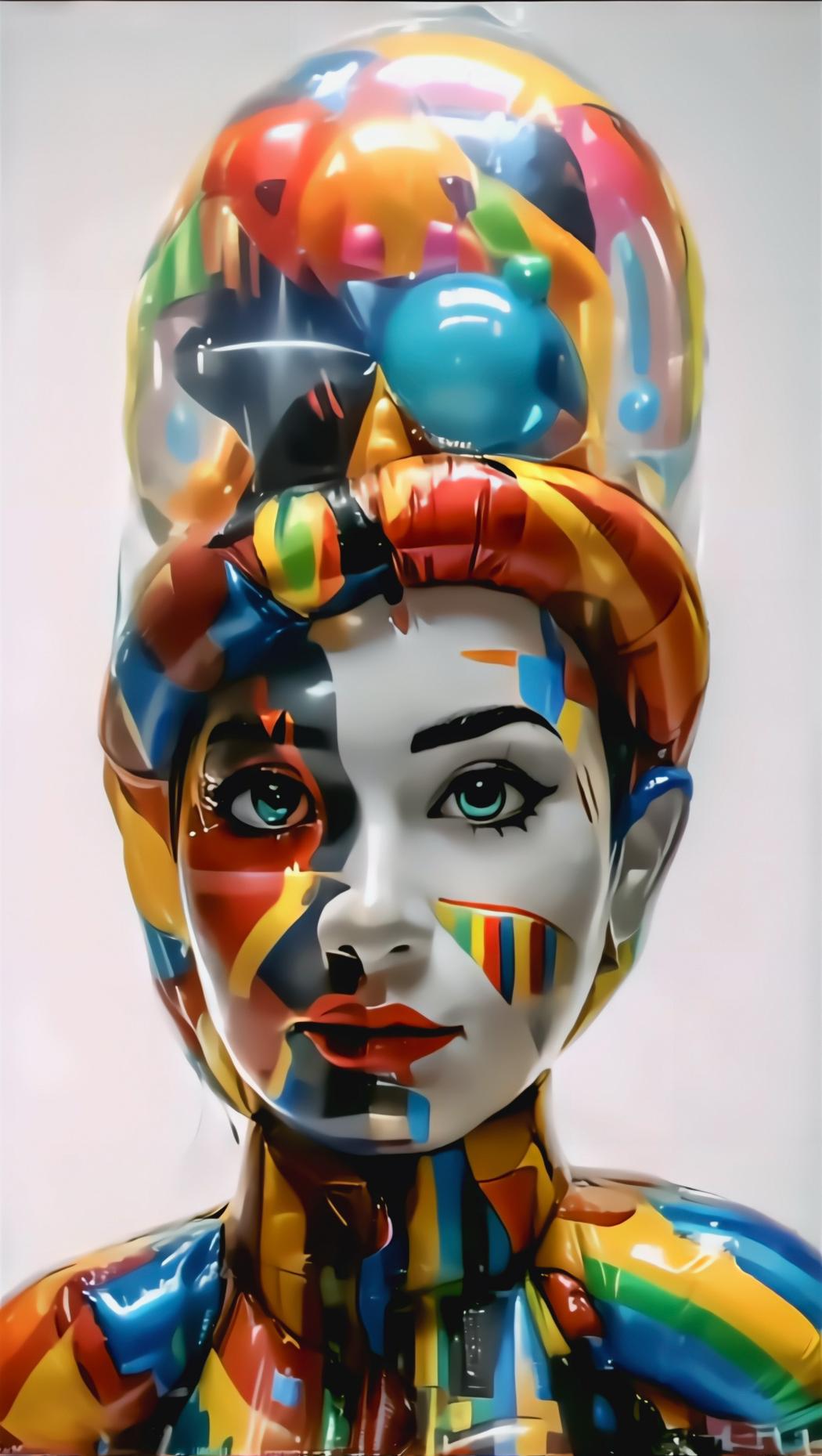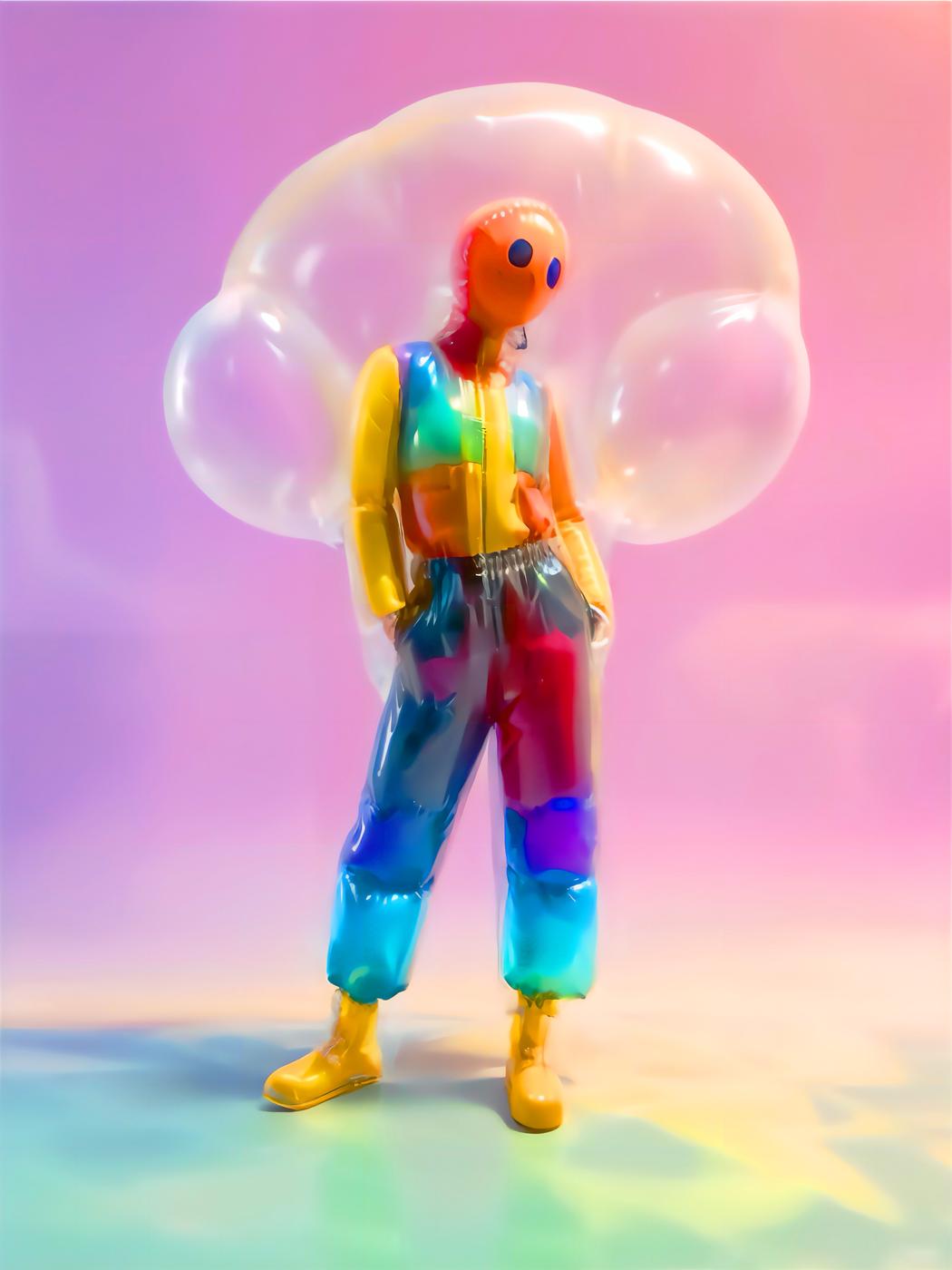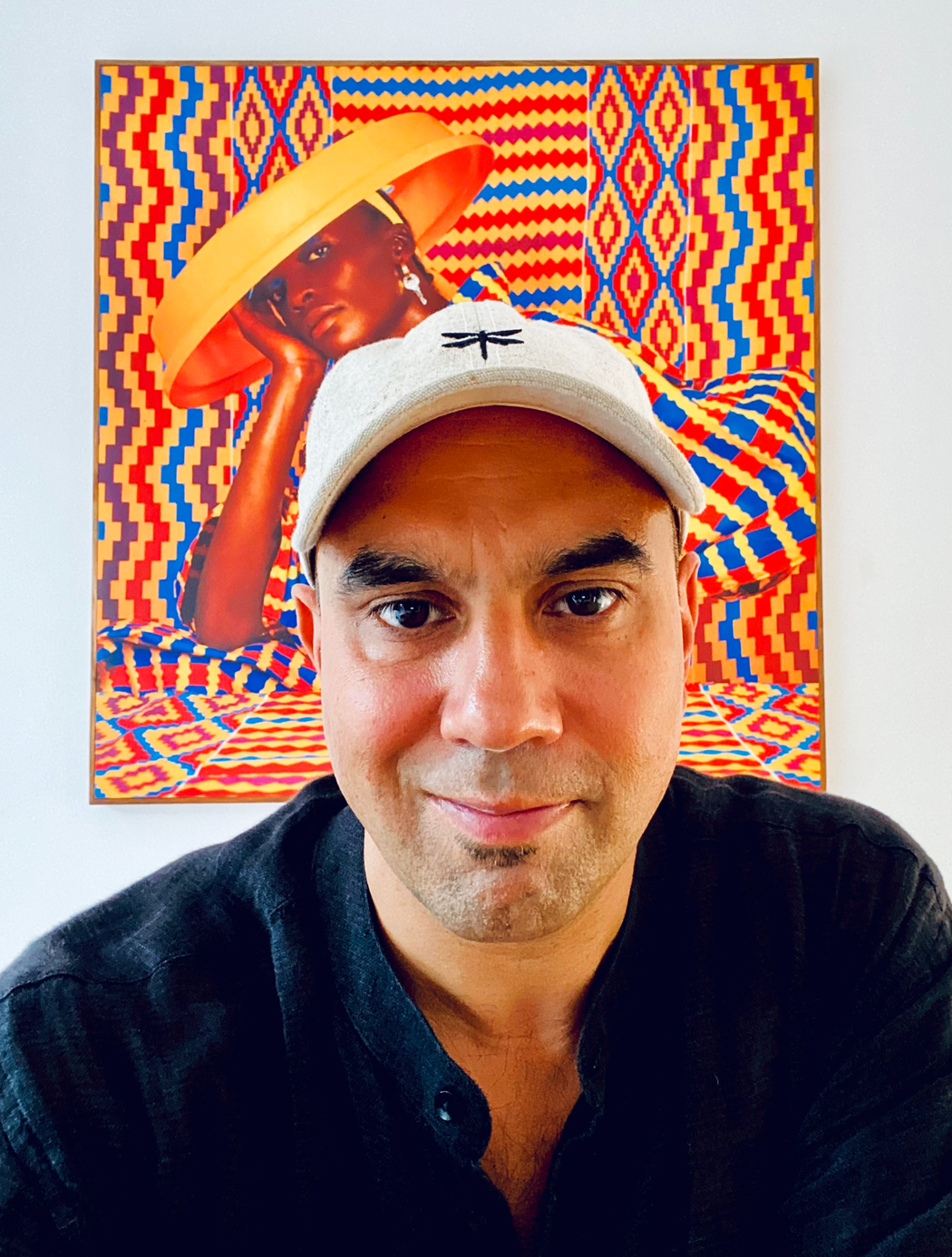Sanjay Nicolas Gill
Your work often features inflatable, shiny figures. What fascinates you about the aesthetics of balloons, inflatables, and shiny surfaces? What emotional or symbolic meaning do they have for you?
What fascinates me about these materials is their paradoxical nature: they appear light and almost weightless, yet they possess a tangible physical presence, occupying space and casting shadows. The shiny surfaces act like armor—they mirror light and gaze alike, deflecting as much as they reveal. For me, they symbolize what we present to the outside world: a shimmering shell that both protects and piques curiosity. Emotionally, they embody the tension between vulnerability and self-protection.
Masks and anonymity appear repeatedly in your series. How do you view the relationship between identity and anonymity in the digital age, and how is this reflected in your images?
In the digital age, the boundaries between what we reveal and what we conceal are increasingly blurred. For me, masks represent this ambivalence: they allow for both intimacy and distance at the same time. In my images, faces are often anonymous, almost childlike—never fully graspable. The masks in my work serve as both protection and invitation—they preserve intimacy, yet still let light and emotion shine through.
“Amy” is a classic portrait that captures this perfectly: we sense her vibrant inner world without her fully revealing herself. Her beauty is immediately apparent, and we project countless wonderful thoughts onto her—but whether these are true remains a mystery. Much like carefully curated online profiles, we see a fascinating surface whose true depth remains elusive.
 Sanjay Nicolas Gill | Amy
Sanjay Nicolas Gill | Amy
You describe how life is sometimes “too heavy or too easy to leave uncommented.” Can you describe a moment when you felt this tipping point and how it translated into an image?
My work always begins with my own photographs—many taken during vacations or weddings, moments of pure lightness. I capture them so I can draw on this “preserved light” during darker times, reminding myself of the richness life offers, both inside and out. My aim isn’t to drown in nostalgia, but to lift myself up when my spirit feels heavy. I think many people forget this, overwhelmed by daily stress and unmet expectations.
That’s why I anonymize my deeply personal photos with shiny surfaces and masks, allowing me to share them without exposing their intimacy. For me, it’s less about a dramatic tipping point and more about an ongoing visual dialogue—between lightness and weight, past and present.
Your practice seems like a collection of “small escapes.” What kinds of escapes—mental, physical, emotional—do your works represent? Do you have a favorite “escape fragment”?
My ‘little escapes’ are quite diverse: sometimes I get lost in the sky and clouds while flying a kite, sometimes on the beach when the waves are breaking endlessly, or sometimes when meeting people or travelling. For me, there isn’t just one favourite moment, but lots of bits and pieces that come together to form a mosaic – made up of retreat and encounter, contemplation and adventure.
 Sanjay Nicolas Gill | Assini
Sanjay Nicolas Gill | Assini
You commute between Pretoria and Berlin. How does this constant movement or the tension between two homes influence your creative process or your choice of subject matter?
For years, I’ve traveled back and forth between various places in Africa and Berlin. This broadens my perspective and constantly recalibrates my worldview.
For me, there aren’t really two homes—Berlin is my base, the place where many close friends live and which has shaped me over decades. Because I’m always coming and going, I notice the city’s changes much more than those who are here every day.
Africa, on the other hand, represents chaos and joie de vivre despite adversity, creativity and spiritual connection despite often reactionary structures. There, I witness awakening and innovation born from profound inequality and injustice.
Still, I am an expat, living a privileged life and able to leave at any time. This creates a sense of distance and isolation, which I try to bridge through this series.
“Assini,” for example, was created on a beach in Côte d’Ivoire. I spent a year there, but my French is poor and without the language, it’s hard to truly immerse yourself in a culture. That’s why this figure—a warrior-like, almost archaic being—is so closely tied to that place for me. She embodies all the impressions and feelings I absorbed there.
Iridescent colors and luminosity play a central role. How do you choose your color palettes and textures? Do you associate certain shades with certain emotions or memories?
My color palettes emerge intuitively, in the moment. Even as a child, I was fascinated by puddles of water with shimmering oil—I could spend hours stirring them, watching the colors and water mix and the surface constantly change. This fascination with the mutable, the amorphous, and the accidental has stayed with me.
With texture, it was important to me to make the supernatural tangible through this kind of synthetic polymer — these entities no longer originate from our everyday world. “Jozi” is such a being, super-artificial in a playful, futuristic environment. The bubble, as a key ethereal element, provides an important counterpoint to the material figure. It seems to give delicate, tangible form to the invisible—an energy or aura surrounding Jozi. After decades as an art director, such an intuitive color sense is also, of course, a whisper of experience.
Anything illuminated—like oversized neon signs—has always had a magical pull on me. Perhaps this comes from a formative childhood memory: my father once hung a giant, glowing roll of gum drops in our small apartment. It was far too big for our flat, but it always radiated a cheerful, almost magical atmosphere. Impressions like these continue to shape my love of bright colors and shimmering surfaces.
 Sanjay Nicolas Gill | Jozi
Sanjay Nicolas Gill | Jozi
Your characters hover between childlikeness and distance. How do you hope viewers relate to these figures? Should they project their own stories into them?
Absolutely. I see my figures as projection surfaces—they are intentionally anonymous and open, so that everyone can discover their own feelings, memories, or stories within them. The blend of childlikeness and distance is meant to invite viewers to encounter themselves: their own need for protection, but also for connection. I’m happy when viewers see themselves reflected in my work—or perhaps even experience a moment of lightness.


Leave a Reply